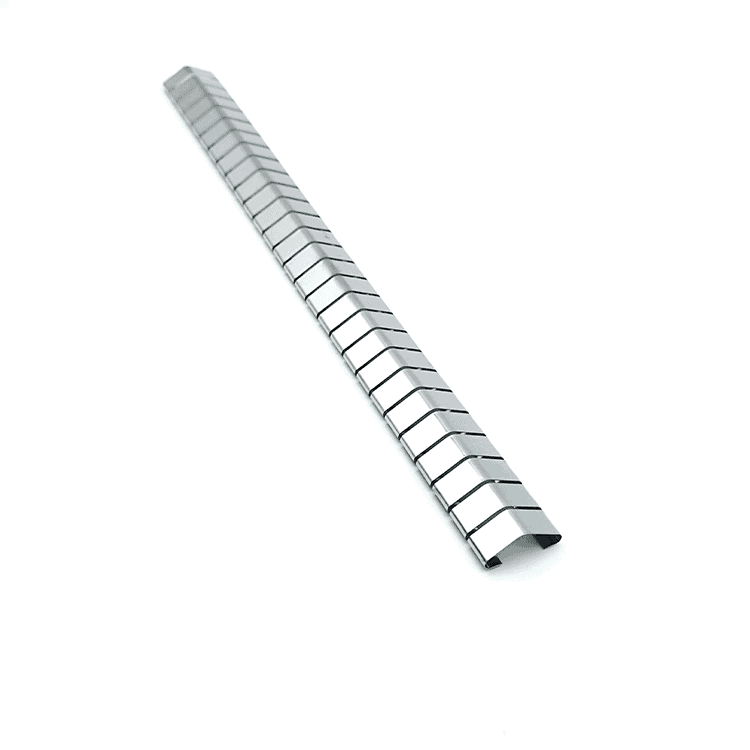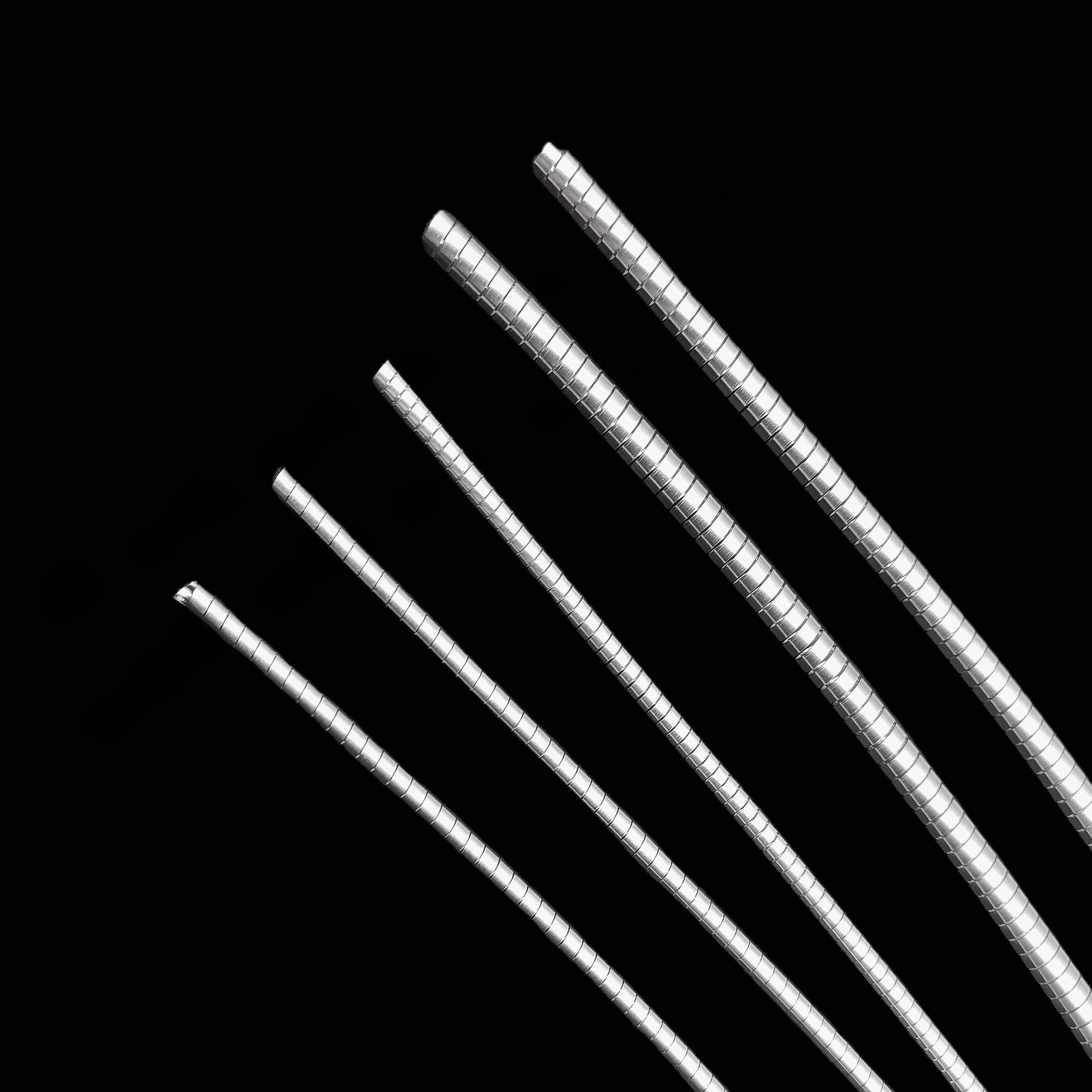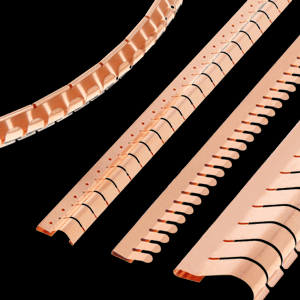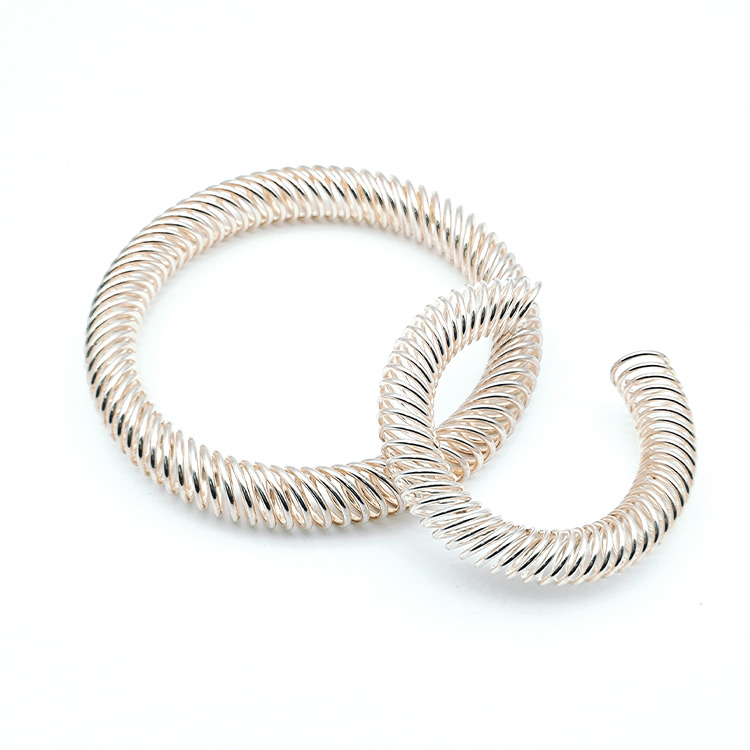Electrical Conductivity Aluminum Foil Tape
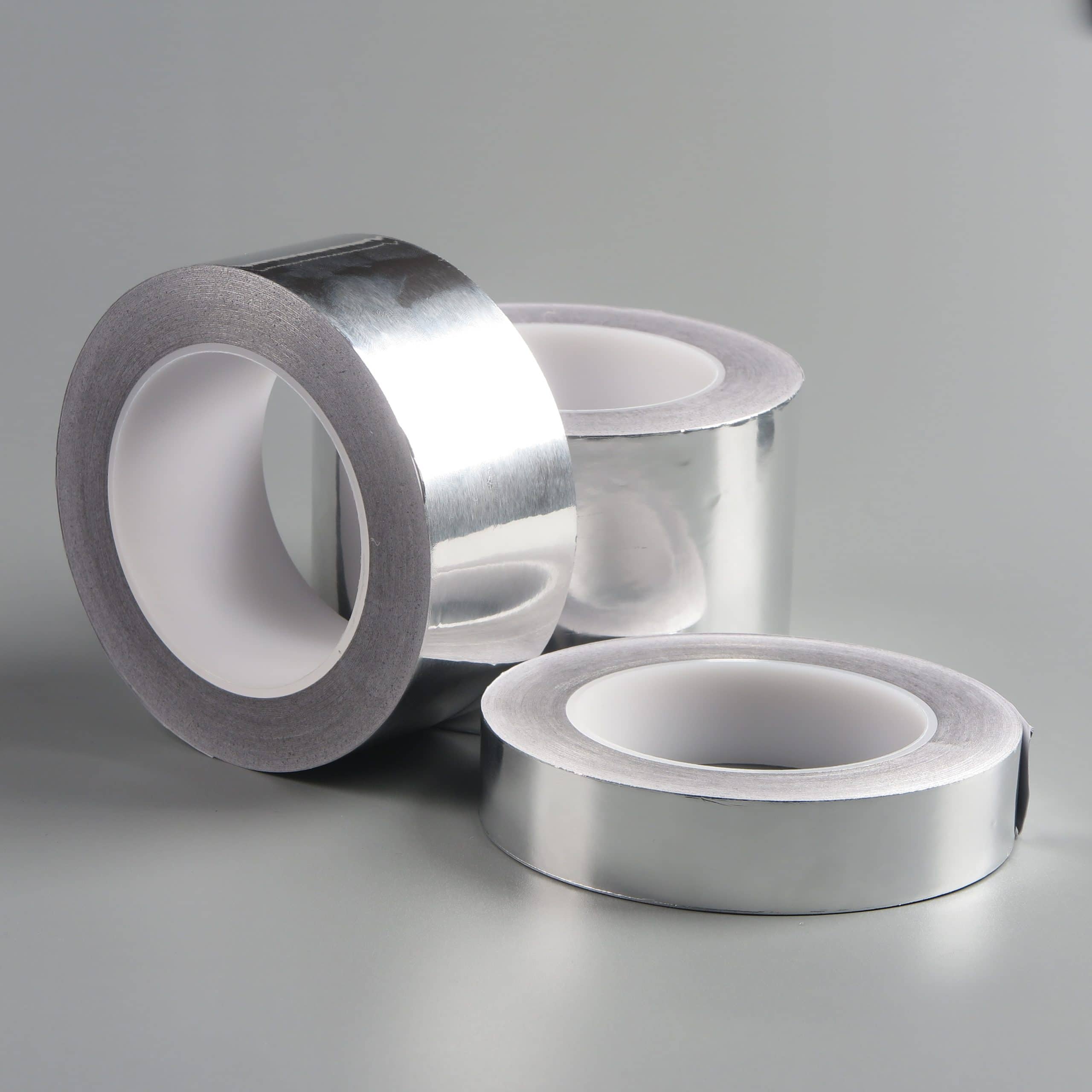

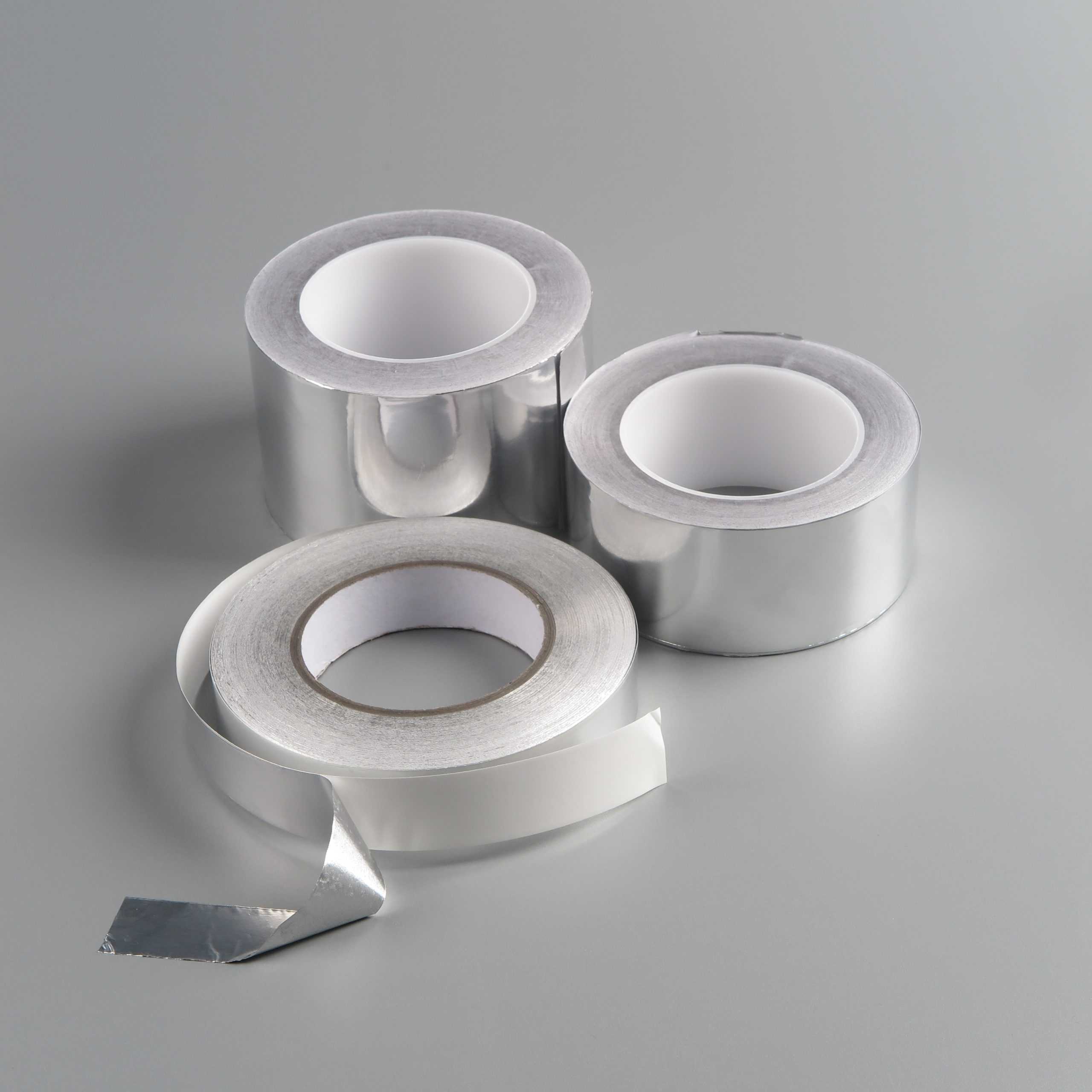
Electrical conductivity aluminum foil tape is a versatile and essential material in various industries, particularly in electronics, electrical engineering, and construction.
Electrical conductivity aluminum foil tape is a versatile and essential material in various industries, particularly in electronics, electrical engineering, and construction. This article delves deep into the properties, applications, benefits, and selection criteria for electrical conductivity aluminum foil tape, focusing on why it is indispensable for ensuring electrical continuity, shielding, and grounding.
Table of Contents
What is Electrical Conductivity Aluminum Foil Tape?
Electrical conductivity aluminum foil tape is a specialized adhesive tape made from thin aluminum foil coated with an electrically conductive adhesive. This tape is designed to offer excellent conductivity across its surface and through its adhesive, making it ideal for applications requiring reliable electrical connections and shielding. The aluminum foil provides a conductive surface, while the adhesive ensures that the tape adheres firmly to various substrates while maintaining electrical conductivity.
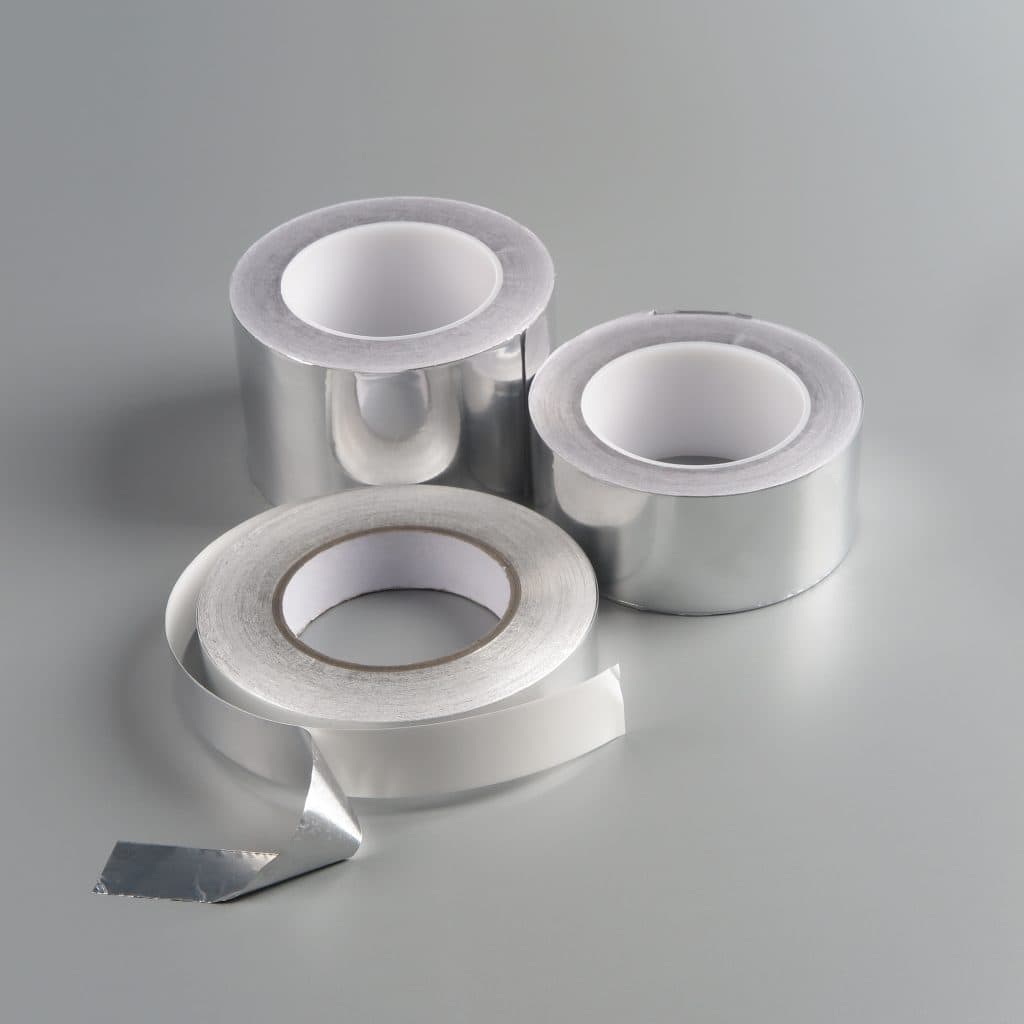
Key Properties of Electrical Conductivity Aluminum Foil Tape
1. Electrical Conductivity
The primary feature of aluminum foil tape is its excellent electrical conductivity. Both the aluminum foil and the conductive adhesive are designed to allow current to pass through with minimal resistance. This property is crucial in applications where maintaining electrical continuity is essential, such as in grounding, EMI/RFI shielding, and cable wrapping.
2. Shielding Effectiveness
Aluminum foil tape is widely used for its shielding capabilities. It effectively blocks electromagnetic interference (EMI) and radio frequency interference (RFI), protecting sensitive electronic components from unwanted signals that could cause malfunction or data corruption. This makes it an essential material in the manufacturing of electronic devices, where shielding is critical.
3. Thermal Conductivity
In addition to its electrical conductivity, aluminum foil tape also exhibits good thermal conductivity. This makes it useful in applications where heat dissipation is required, such as in heat sinks, thermal pads, or to enhance the performance of cooling systems in electronic devices.
4. Durability and Corrosion Resistance
Aluminum is naturally resistant to corrosion, which ensures that the tape remains effective even in harsh environments. This durability makes electrical conductivity aluminum foil tape suitable for outdoor applications or in areas exposed to moisture, chemicals, or extreme temperatures.
5. Flexibility and Conformability
Electrical conductivity aluminum foil tape is highly flexible and can conform to irregular surfaces and contours. This makes it easy to apply in a variety of situations, including wrapping around cables, sealing seams, or covering complex shapes in electronic assemblies.
6. Adhesive Strength
The conductive adhesive used in aluminum foil tape is designed to provide a strong bond with a variety of surfaces, including metals, plastics, and composites. This adhesive strength ensures that the tape stays in place and maintains its electrical and shielding properties over time.
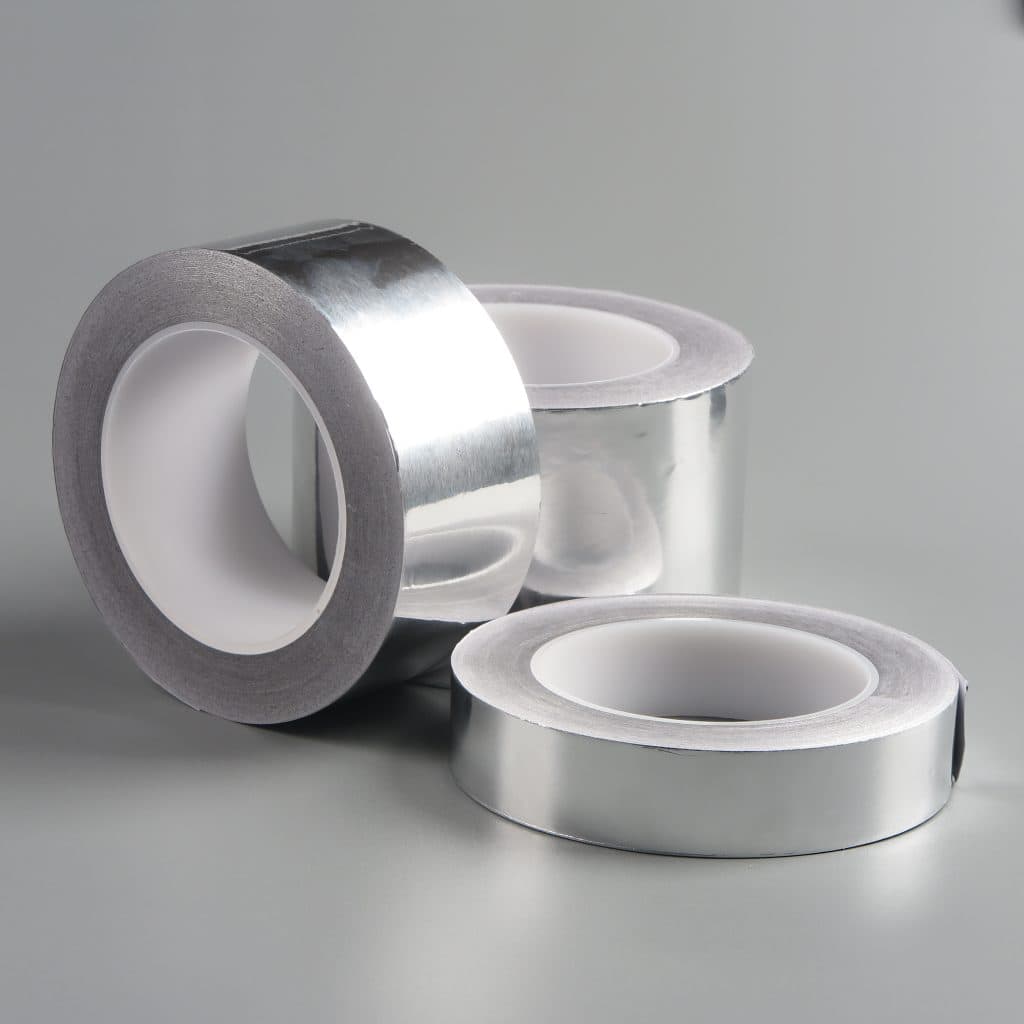
Applications of Electrical Conductivity Aluminum Foil Tape
Electrical conductivity aluminum foil tape is used in a wide range of applications across various industries. Here are some of the most common uses:
1. EMI/RFI Shielding
One of the primary applications of aluminum foil tape is in the shielding of electronic components from electromagnetic and radio frequency interference. By applying the tape to enclosures, cables, or circuit boards, manufacturers can prevent unwanted signals from disrupting the performance of sensitive electronics. This is particularly important in devices such as smartphones, computers, medical equipment, and communication systems, where even minor interference can lead to significant problems.
2. Grounding and Electrical Continuity
Electrical conductivity aluminum foil tape is often used to create grounding connections or to ensure electrical continuity between different components. For example, it can be used to bridge gaps between conductive surfaces, ensuring that there is no interruption in the electrical path. This is essential in applications such as grounding electrical panels, connecting metal enclosures, or linking conductive parts in complex assemblies.
3. Cable Wrapping and Insulation
Aluminum foil tape is commonly used to wrap cables and wires, providing both electrical insulation and shielding. This is especially useful in environments with high levels of electromagnetic interference, where unshielded cables could act as antennas, picking up unwanted signals. The tape also helps to protect cables from physical damage and wear, extending their lifespan and ensuring reliable performance.
4. Sealing and Jointing in HVAC Systems
In heating, ventilation, and air conditioning (HVAC) systems, aluminum foil tape is used to seal joints and seams in ductwork. Its conductivity is not as critical in this application, but its ability to create an airtight, durable seal is invaluable. The tape helps to prevent air leaks, improve system efficiency, and protect against moisture ingress, which can lead to corrosion and mold growth.
5. Assembly and Manufacturing of Electronic Devices
During the assembly of electronic devices, electrical conductivity aluminum foil tape is often used to create connections between components or to shield certain parts of the device from interference. For instance, it might be used to connect a grounding pad to a metal case, ensuring that the case is properly grounded and that the device meets electromagnetic compatibility (EMC) standards.
6. Automotive and Aerospace Applications
In the automotive and aerospace industries, aluminum foil tape is used for a variety of purposes, including shielding wiring harnesses, protecting sensors from EMI, and ensuring the integrity of electronic control units. Its combination of electrical conductivity, durability, and resistance to harsh environmental conditions makes it ideal for use in vehicles and aircraft, where reliability is paramount.
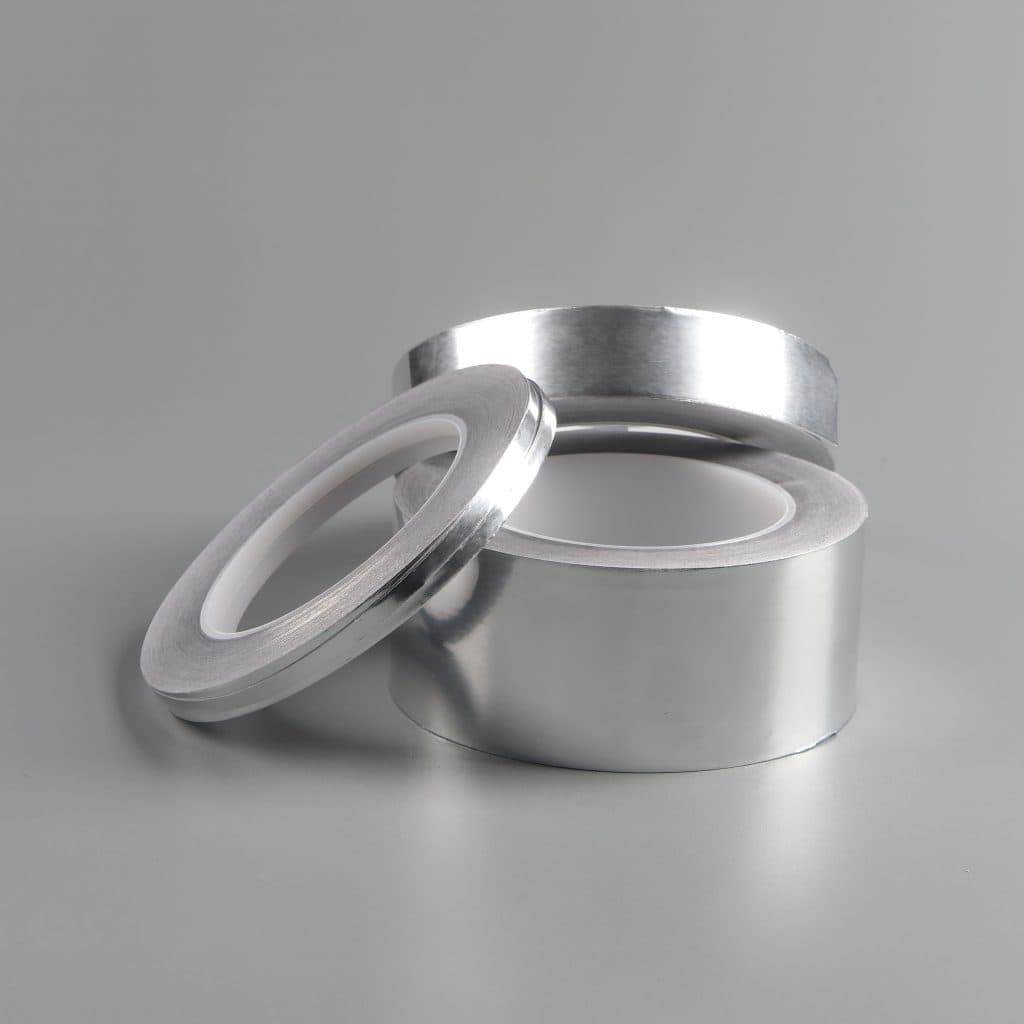
Benefits of Using Electrical Conductivity Aluminum Foil Tape
1. Versatility
One of the most significant benefits of electrical conductivity aluminum foil tape is its versatility. It can be used in a wide range of applications, from simple repairs to complex electronic assemblies. This versatility makes it a valuable tool for engineers, technicians, and manufacturers across many different industries.
2. Improved Performance of Electronic Devices
By providing effective shielding and ensuring electrical continuity, aluminum foil tape can significantly improve the performance of electronic devices. It helps to reduce the impact of EMI and RFI, preventing signal degradation, data loss, and malfunctions. This is particularly important in high-performance electronics, where even small improvements in shielding can have a noticeable impact on overall performance.
3. Cost-Effective Solution
Electrical conductivity aluminum foil tape is a cost-effective solution for many electrical and electronic applications. It is relatively inexpensive compared to other shielding materials, yet it offers excellent performance. This makes it an attractive option for manufacturers looking to reduce costs without compromising on quality.
4. Easy to Apply and Use
The adhesive backing on aluminum foil tape makes it easy to apply to a variety of surfaces, including metals, plastics, and composites. This ease of use is a significant advantage in applications where time and efficiency are critical, such as in manufacturing or field repairs. The tape can be cut to size, shaped to fit complex contours, and applied quickly, reducing labor costs and downtime.
5. Long-Lasting and Durable
Thanks to its corrosion resistance and durability, electrical conductivity aluminum foil tape provides long-lasting performance in even the most challenging environments. Whether used in outdoor applications, exposed to moisture, or subjected to high temperatures, the tape maintains its conductivity and shielding effectiveness over time, ensuring reliable performance.
6. Environmental Resistance
Aluminum foil tape is resistant to a wide range of environmental factors, including UV radiation, chemicals, and temperature extremes. This makes it suitable for use in both indoor and outdoor applications, as well as in harsh industrial environments. Its ability to withstand these conditions ensures that it continues to provide effective shielding and electrical continuity, even under challenging circumstances.
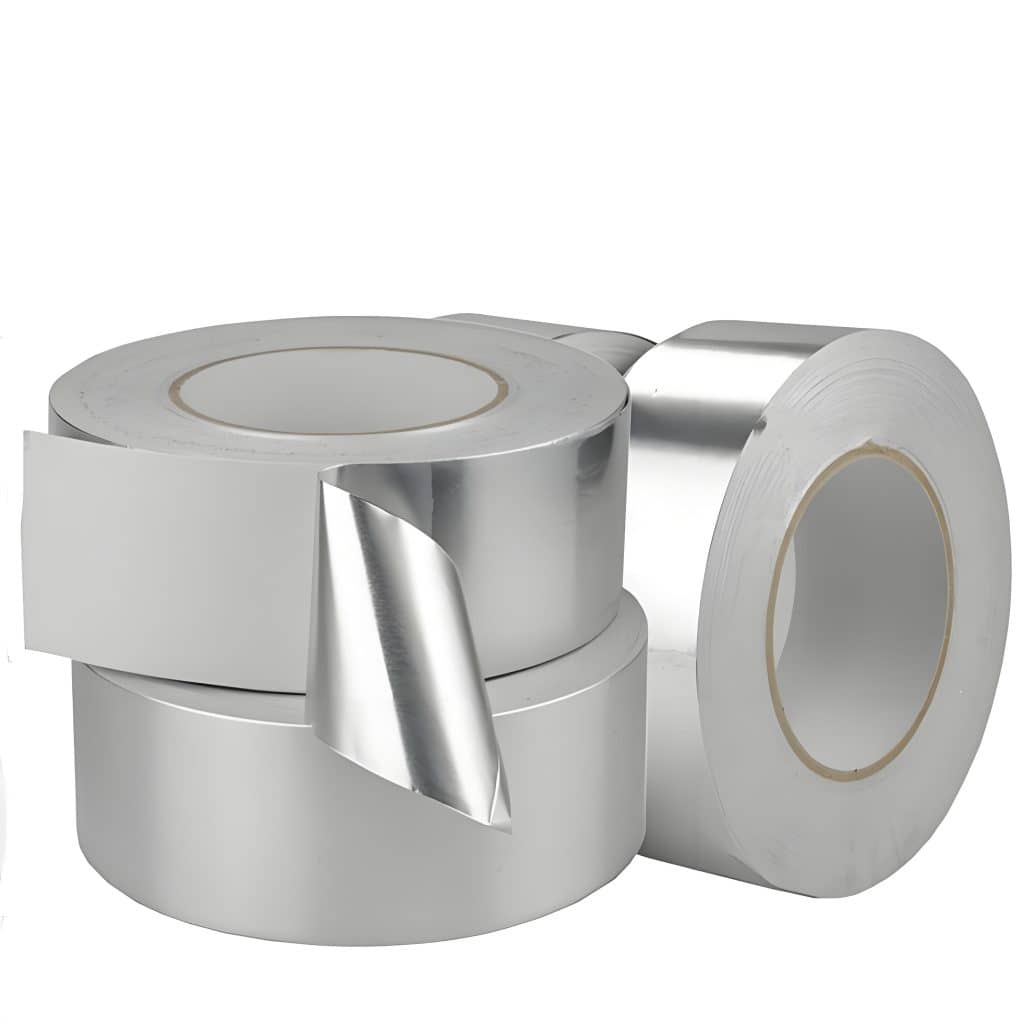
Selection Criteria for Electrical Conductivity Aluminum Foil Tape
When selecting electrical conductivity aluminum foil tape for a specific application, several factors should be considered to ensure optimal performance:
1. Conductivity Requirements
The level of electrical conductivity required for a particular application will determine the type of aluminum foil tape to use. Some tapes offer higher conductivity than others, making them more suitable for applications where minimizing resistance is critical. It is important to choose a tape that meets the specific conductivity requirements of your project.
2. Shielding Effectiveness
The effectiveness of the tape in blocking EMI and RFI is another crucial consideration. Depending on the application, you may need a tape with enhanced shielding capabilities, especially in environments with high levels of electromagnetic interference. Look for tapes that have been tested and rated for their shielding effectiveness to ensure they meet your needs.
3. Adhesive Strength and Type
The adhesive used in aluminum foil tape plays a significant role in its performance. Conductive adhesives are necessary for applications where the tape needs to maintain electrical continuity between surfaces. Additionally, the strength of the adhesive should be considered, especially if the tape will be used in environments where it will be exposed to stress, movement, or harsh conditions.
4. Environmental Resistance
Consider the environmental conditions where the tape will be used. If the application involves exposure to moisture, chemicals, or extreme temperatures, you will need a tape that is designed to withstand these conditions. Aluminum foil tapes with added protective coatings or specialized adhesives are available for such applications.
5. Flexibility and Conformability
For applications involving irregular surfaces or tight spaces, the flexibility and conformability of the tape are important. Ensure that the tape you choose can easily adapt to the shape of the surface it will be applied to, without compromising its conductivity or shielding effectiveness.
6. Temperature Tolerance
The temperature tolerance of the tape should match the operating conditions of your application. Some aluminum foil tapes are designed to withstand high temperatures, making them suitable for use in environments such as automotive engines, industrial machinery, or electronic devices that generate significant heat.
7. Cost and Availability
Finally, consider the cost and availability of the tape. While it is important to choose a tape that meets your performance requirements, it is also essential to stay within budget. Look for suppliers that offer high-quality tape at competitive prices and ensure that the tape is readily available when you need it.
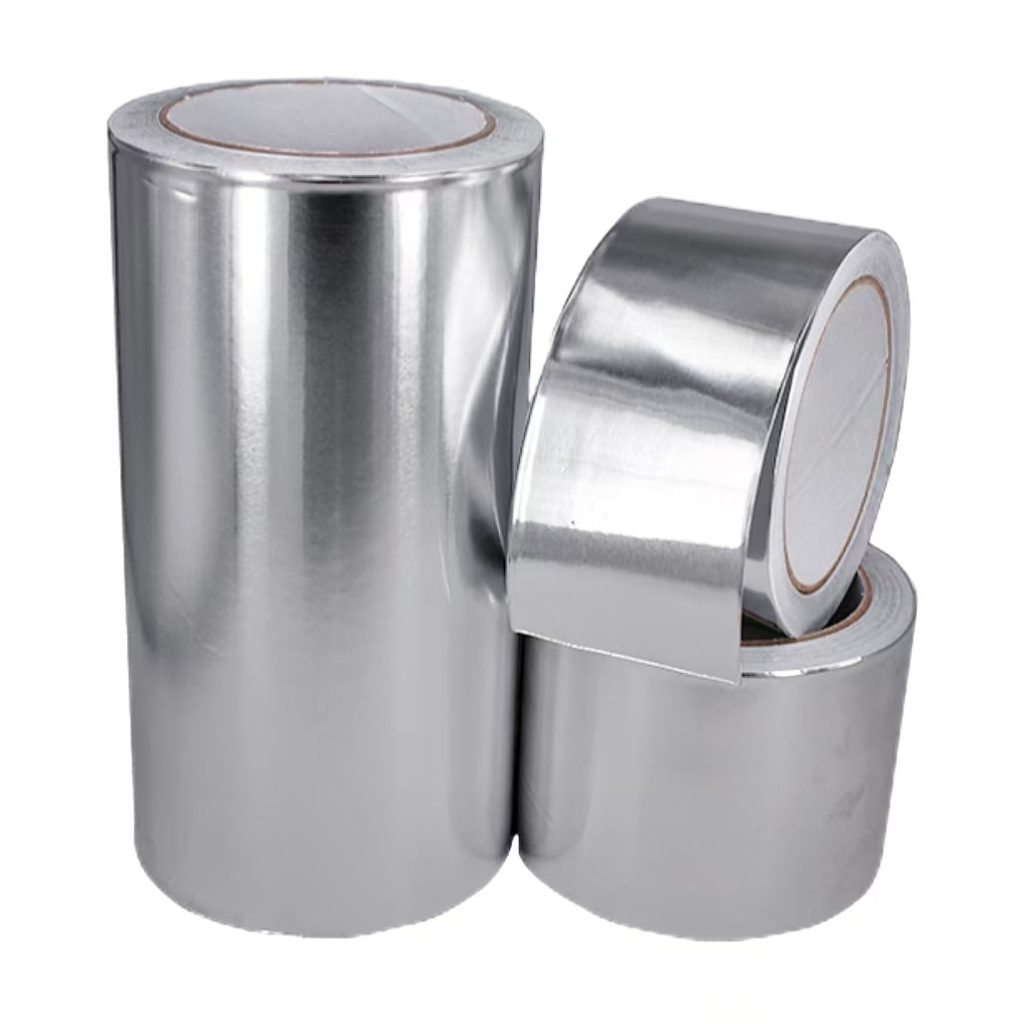
Conclusion
Electrical conductivity aluminum foil tape is an essential material in many industries, offering a combination of electrical and thermal conductivity, shielding effectiveness, durability, and ease of use. Its versatility makes it suitable for a wide range of applications, from grounding and shielding in electronic devices to sealing and insulating in HVAC systems.
When selecting aluminum foil tape for your project, it is important to consider factors such as conductivity requirements, shielding effectiveness, adhesive strength, environmental resistance, flexibility, and temperature tolerance. You can also contact us directly and our engineers will help you choose the properest product.By choosing the right tape for your application, you can ensure reliable performance, improved efficiency, and long-lasting results.
For any application requiring effective electrical conductivity, shielding, or grounding, electrical conductivity aluminum foil tape is a proven, cost-effective solution that delivers reliable, high-performance results. Whether you are working in electronics, automotive, aerospace, or construction, this versatile material is sure to meet your needs and help you achieve your project goals.
Read more: Electrical Conductivity Aluminum Foil TapeYou May Also Like
-
 High Shielding Effectiveness EMI Shielding Fingerstock Gaskets
High Shielding Effectiveness EMI Shielding Fingerstock GasketsEMI/EMC Shielding | RFI Shielding | EMI Gaskets
Fingerstrips
In today's increasingly complex electronic landscape, electromagnetic interference (EMI) shielding has become a critical concern for device manufacturers and designers. One effective solution for addressing EMI issues is the use of high shielding effectiveness EMI shielding fingerstock/fingerstrip gaskets. These specialized components play a vital role in protecting electronic devices from unwanted electromagnetic radiation and maintaining electromagnetic compatibility (EMC). What is EMI Shielding?The Role of EMI Shielding Fingerstock GasketsAdvantages of High Shielding Effectiveness EMI Shielding Fingerstock GasketsConstruction and Materials of High Shielding Effectiveness EMI Shielding Fingerstock GasketsApplications of High Shielding Effectiveness EMI Shielding Fingerstock GasketsPerformance Metrics of Fingerstock GasketsChallenges and ConsiderationsFuture Trends in EMI ShieldingCase Studies of High Shielding Effectiveness EMI Shielding Fingerstock GasketsConclusion What is EMI Shielding? Electromagnetic interference (EMI) refers to the disruption of electronic circuits and systems caused by electromagnetic radiation from external sources. This interference can manifest as noise, signal degradation, or complete system malfunctions. EMI can be generated by a variety of sources including electrical devices, communication systems, and even natural phenomena. To combat EMI, shielding techniques are employed to block or attenuate electromagnetic waves. EMI shielding involves creating a barrier that prevents the interference from penetrating sensitive areas of electronic devices. Effective EMI shielding ensures......
-
Right-angle shielding fingerstrips/angled fingerstocks
EMI/EMC Shielding | RFI Shielding | EMI Gaskets
Fingerstrips
Introduction Right-angle shielding fingerstrips, also known as angled fingerstrips, are specialized components designed to manage electromagnetic interference (EMI) and radio frequency interference (RFI) in electronic systems. These fingerstrips are particularly useful in configurations where electronic components intersect at a 90-degree angle. Their primary role is to ensure effective shielding, maintaining electromagnetic compatibility (EMC) and protecting sensitive electronic equipment from interference. IntroductionDesign and FunctionalitySpecifications and MaterialsInstallation ConsiderationsManufacturing ProcessBenefitsConclusion Design and Functionality Purpose and Importance The main purpose of right-angle shielding fingerstrips is to provide reliable EMI/RFI shielding in electronic setups with perpendicular component arrangements. When electronic devices have components aligned at right angles, traditional shielding solutions might not be effective due to gaps or incomplete coverage. Right-angle fingerstrips address this issue by ensuring continuous shielding across these angular junctions, which is crucial for maintaining the performance and reliability of electronic systems. Applications Right-angle shielding fingerstrips are used in a wide range of applications: Computer Hardware: To shield critical internal components from electromagnetic emissions that could cause operational issues or data corruption. Telecommunications Equipment: To prevent signal interference and ensure the integrity of communication systems. Automotive Electronics: To protect sensitive electronic control systems from EMI that could impact vehicle performance. Shielded Enclosures:......
-
 RF/EMI Shield Spiral Gaskets: Essential Components for Electromagnetic Compatibility
RF/EMI Shield Spiral Gaskets: Essential Components for Electromagnetic CompatibilityEMI/EMC Shielding | RFI Shielding | EMI Gaskets
RF/EMI Shield Spiral Gasket
In today's interconnected world of electronics and telecommunications, maintaining electromagnetic compatibility (EMC) is crucial to ensure optimal performance and reliability of electronic devices. RF/EMI Shield Spiral Gaskets play a pivotal role in achieving this goal by effectively mitigating electromagnetic interference (EMI) that can disrupt signal integrity and functionality. What are RF/EMI Shield Spiral Gaskets?Key Features and BenefitsApplications Across Industries What are RF/EMI Shield Spiral Gaskets? RF/EMI Shield Spiral Gaskets are specialized components designed to provide robust shielding against electromagnetic radiation. They are typically made from conductive materials such as metal alloys or conductive elastomers, crafted into a spiral shape that allows them to conform closely to mating surfaces. This design ensures consistent contact and compression, optimizing the gasket's ability to block EMI effectively. Key Features and Benefits EMI Shielding Effectiveness: The primary function of RF/EMI Shield Spiral Gaskets is to attenuate electromagnetic waves, preventing external interference from disrupting sensitive electronic signals. This capability is crucial for maintaining signal integrity and preventing data corruption in telecommunications, aerospace, medical devices, and industrial automation. Versatility in Applications: These gaskets are available in various sizes, shapes, and materials to suit different application requirements. They are commonly used in:Telecommunications: Ensuring clear and reliable communication by......
-
 Handa Shielding – Clip-on mounting fingerstrip
Handa Shielding – Clip-on mounting fingerstripFingerstrips
Clip-on mounting shielding fingerstrip
Clip-on mounting fingerstrip gaskets are essential components in the realm of electromagnetic shielding, playing a critical role in ensuring the effective performance of electronic devices and systems. These gaskets, produced by leading manufacturers like Handa Shielding, are designed to provide reliable electromagnetic interference (EMI) shielding and grounding. This article explores the construction, types, features, and applications of clip-on mounting fingerstrip gaskets, with a focus on Handa Shielding’s offerings. IntroductionConstruction and MaterialsTypes of Clip-On Mounting Fingerstrip GasketsMain Features of Clip-On Mounting Fingerstrip GasketsTypical ApplicationsConclusion Introduction In the world of electronics, electromagnetic shielding is crucial for preventing interference and ensuring the optimal functionality of devices. Fingerstrip gaskets are a key element in this shielding process, providing a conductive pathway that helps maintain signal integrity and reduce EMI. Handa Shielding, a prominent supplier in the shielding industry, offers a range of solutions including both stick-on and clip-on mounting fingerstrip gaskets. While stick-on gaskets are useful for general purposes and fit into confined spaces, clip-on mounting fingerstrip gaskets are engineered for more specialized requirements, particularly in challenging environments. Clip-on mounting fingerstrip gaskets are especially valuable in high-temperature environments and other demanding conditions where traditional stick-on solutions may be inadequate. This article provides an in-depth......
-
 Electrical Conducting Canted Coil Springs
Electrical Conducting Canted Coil SpringsHanda Canted Coil Springs
Electrical conducting springs
Electrical Conducting Springs In the fields of electrical and mechanical engineering, electrical conducting canted coil springs have emerged as pivotal components due to their unique blend of electrical conductivity and mechanical robustness. This article provides an in-depth examination of canted coil springs, focusing on their design, performance, applications, and customization. By understanding these aspects, engineers can better utilize these springs to enhance the performance and reliability of their systems. The Essence of Electrical Conducting Canted Coil SpringsVersatile ApplicationsPerformance FactorsMaterial ChoicesCustomization and AvailabilityOrientation and DesignConclusion The Essence of Electrical Conducting Canted Coil Springs Electrical conducting canted coil springs are distinguished by their angled coil configuration, which sets them apart from traditional springs. This design feature enables a compact footprint, allowing for the management of more power in less space while maintaining cooler operating temperatures. The coil's angled arrangement not only optimizes space but also improves heat dissipation. This is particularly advantageous in applications where heat management is crucial, as it minimizes heat rise and ensures a consistent, reliable electrical connection even under shock and vibration. The design of electrical conducting canted coil springs involves winding a wire into a helical shape and then angling it slightly. This results in a spring......

